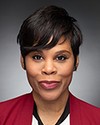Sonia, thanks for the question.
It really is pivotal and it is at the forefront of everything. Under the federal GBV strategy and our plan, the priority is to increase support for the most vulnerable populations. I would like to point out here that when we say “women”, women are not a homogeneous group.
We know, as you mentioned, Sonia, that racialized indigenous women have seen more violence during this pandemic and have had more trauma. We have to recognize that, and this plan recognizes that—so it's women, girls, indigenous women and girls, LGBTQ2 and gender-diverse individuals. I want to include here as well women living in the north, and women in rural and remote communities.
I was speaking to someone just the other day who said that when you're dealing with a rural community and you're experiencing intimate partner violence, everybody in town knows your business. If you go and seek help, there's usually one place to seek it and everybody will know. That sometimes stops people from coming forward, and that's something to consider. How do we help women like that, who are feeling isolated and who are isolated, so that they can seek help when they need it? It's women with disabilities and girls with disabilities, as well.
I'll give you an example, Sonia. There's a project, Eagle Vision. It's an excellent example of prioritizing culturally competent programming. They've developed a series of podcasts, which really is the way to go, and I'm not just saying this as a former journalist. A lot of people tune in. A lot of people take note of podcasts these days. It's called Taken: The Podcast Series, and it shares the stories of missing and murdered indigenous women and girls to help solve cases and raise awareness of the issue. What I want to tell you here, though, is that these podcasts are reaching more than 600,000 Canadians, who listened to the podcast more than 1.4 million times.

